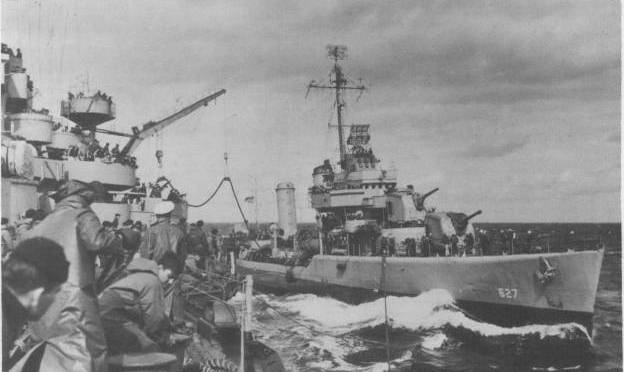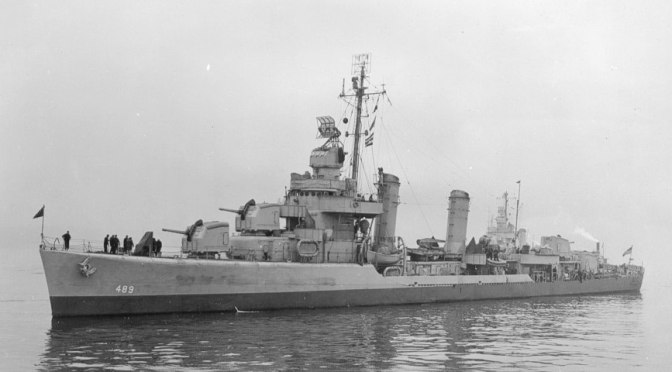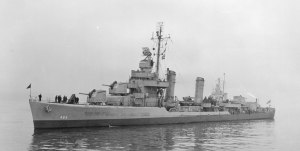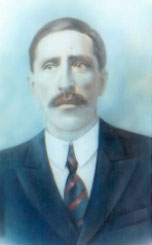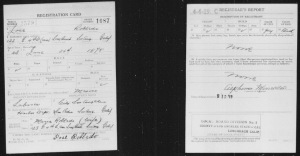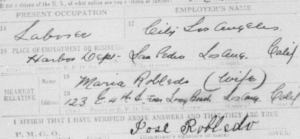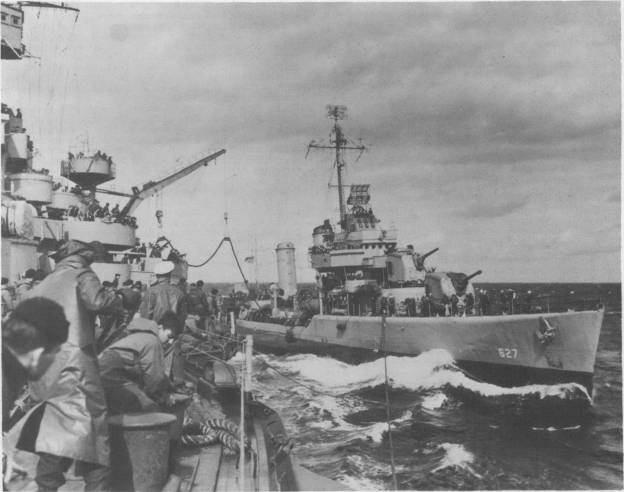 |
| USS Thompson refuels from USS Arkansas, April 1944. Department of Defense photo. |
When my grandfather, Ship’s Cook 3rd Class Michael John Flanagan (1927 – 1997) left the USS Mervine on February 20, 1948, he transferred to the USS Thompson for his final month of service in the Navy.
The USS Thompson (DD-627) was a Navy destroyer commissioned July 10, 1943. Prior to Michael’s assignment on the ship, the Thompson had seen action in the East Coast, North Africa, Europe (including the 1944 Invasion of Normandy), and the Pacific. The Thompson became based out of San Diego, California on October 2, 1947, operating first as a destroyer, and then conducting west coast training operations through the rest of 1948. The Thompson continued to see Pacific activity throughout the Korean War, and was eventually decommissioned on May 18, 1954.
| February 20, 1948 muster roll showing Mike’s transfer from the Mervine to Thompson. Click on the image for a larger view. |
Although the Mervine had been stationed out of San Francisco for two years, and the Thompson out of San Diego, both ships must have ended up in the same port sometime during February 1948 when when my grandfather transferred duty between ships. I assume San Diego was the mutual port since it was the official home base of both ships, and since Michael and Elsie’s first child was born in San Diego in 1947 (which would mean Elsie had already moved from the Bay Area to San Diego after they married).
| March 15, 1948 muster roll showing Mike’s transfer off the USS Thompson for discharge from the Navy. Click on the image for a larger view. |
Michael’s last appearance on the US Navy muster rolls is dated March 15 1948, when he transferred to the Naval Receiving Station “for processing and separation from the Naval service”. SC3 Michael John Flanagan received an honorable discharge on March 18, 1948, in San Diego, California, at 20 years of age.
Sources
Ancestry.com. U.S. World War II Navy Muster Rolls, 1938-1949 [database on-line]. Provo, UT, USA: Ancestry.com Operations Inc, 2011.
Department of Defense. (n.d.). USS Thompson, DD-627. Retrieved from http://commons.wikimedia.org/wiki/File:USS_Thompson_(DD-627).jpg
United States of America. (2003, October 16). Certification of Military Service: Michael J. Flanagan.
United States Navy. (n.d.). Dictionary of American Naval Fighting Ships: Thompson. Naval History & Heritage Command. Web. Retrieved May 19, 2013, from http://www.history.navy.mil/danfs/t5/thompson-ii.htm
USS Thompson (DD-627). (2013, May 10). In Wikipedia. Retrieved from http://en.wikipedia.org/w/index.php?title=USS_Thompson_(DD-627)&oldid=543687617
